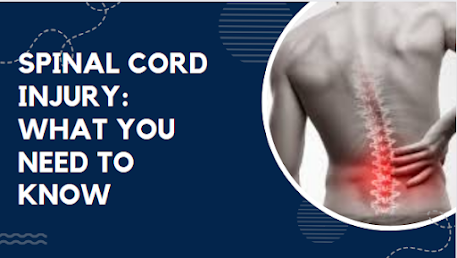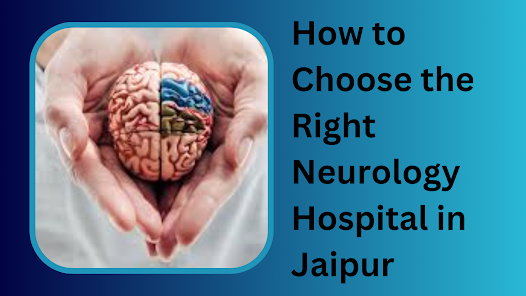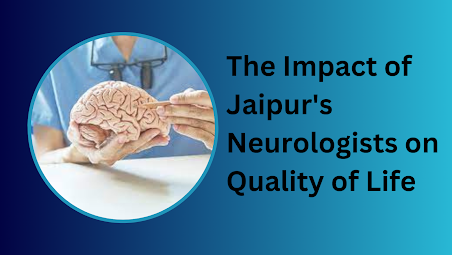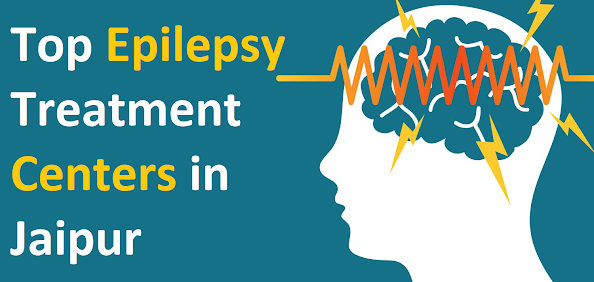Spinal Cord Injury: What You Need to Know
Did you know that a spinal cord injury can have life-altering consequences? Whether caused by a traumatic accident or a medical condition, damage to the spinal cord can result in a range of physical and neurological impairments. This type of injury can affect people of all ages, from children to the elderly, and can have a significant impact on their daily lives.
In this article, we will explore the various aspects of spinal cord injuries, including the causes, symptoms, and treatment options available. We will also discuss the importance of early intervention and rehabilitation in improving outcomes for individuals with spinal cord injuries.
Understanding the intricacies of spinal cord injuries is vital not only for those directly affected but also for their families and caregivers. By providing comprehensive information on this topic, we aim to empower individuals to make informed decisions about their healthcare and offer support to those who may be facing the challenges associated with a spinal cord injury.
Join us as we delve into the world of spinal cord injuries and shed light on this complex and life-altering condition.
Understanding spinal cord injury
The spinal cord is a crucial component of the central nervous system, responsible for transmitting messages between the brain and the rest of the body. When the spinal cord is injured, these messages can be disrupted, leading to a range of impairments. Spinal cord injuries can be categorized as either complete or incomplete, depending on the extent of damage to the cord.
In complete spinal cord injuries, there is a total loss of motor and sensory function below the level of injury. This means that individuals with complete injuries may experience paralysis and loss of sensation in their limbs, trunk, and pelvic organs. In contrast, incomplete spinal cord injuries result in varying degrees of motor and sensory impairment, with some function remaining below the level of injury.
The severity and specific symptoms of a spinal cord injury depend on the location and extent of the damage. Injuries higher up in the spinal cord, such as those in the cervical region (neck), can result in quadriplegia, affecting both the arms and legs. Injuries lower down, such as those in the thoracic or lumbar regions (chest and lower back), may result in paraplegia, affecting only the legs.
It's important to note that spinal cord injuries can also lead to secondary complications, including respiratory problems, pressure sores, muscle spasms, and urinary and bowel dysfunction. These complications can significantly impact the overall well-being and quality of life of individuals with spinal cord injuries.
Causes and risk factors of spinal cord injury
Spinal cord injuries can occur as a result of various causes, including traumatic accidents and medical conditions. The leading cause of spinal cord injury is traumatic events, such as motor vehicle accidents, falls, and sports-related injuries. These accidents often involve sudden and forceful impacts that can damage the spinal cord.
Certain risk factors may increase the likelihood of sustaining a spinal cord injury. Men are more prone to spinal cord injuries than women, and young adults between the ages of 16 and 30 are at the highest risk. Engaging in high-risk activities, such as extreme sports or reckless behavior, can also increase the chances of a spinal cord injury.
Medical conditions, such as tumors, infections, and degenerative diseases, can also lead to spinal cord injuries. These non-traumatic spinal cord injuries may result from the compression or damage to the spinal cord caused by these underlying conditions.
Understanding the causes and risk factors of spinal cord injuries is crucial for raising awareness and promoting prevention strategies. By implementing safety measures and educating individuals about the potential risks, we can work towards reducing the incidence of spinal cord injuries.
Types and classifications of spinal cord injury
Spinal cord injuries can be classified based on their location and severity. The location of the injury refers to the specific section of the spinal cord affected, while the severity indicates the extent of damage and resulting impairments.
The spinal cord is divided into four regions: cervical, thoracic, lumbar, and sacral. Injuries to each region can result in different functional impairments. For example, injuries to the cervical region can affect the arms, legs, and pelvic organs, while injuries to the lumbar region primarily impact the legs.
In terms of severity, spinal cord injuries can be classified as complete or incomplete. Complete injuries involve a total loss of motor and sensory function below the level of injury. In contrast, incomplete injuries result in varying degrees of impairment, with some motor and sensory function remaining intact.
Within the classification of incomplete spinal cord injuries, there are further subcategories, including anterior cord syndrome, central cord syndrome, and Brown-Séquard syndrome. These classifications are based on the specific areas of the spinal cord that are affected and the resulting impairments.
Understanding the types and classifications of spinal cord injuries can help us and individuals affected by these injuries develop appropriate treatment plans and set realistic expectations for recovery.
Symptoms and signs of spinal cord injury
Spinal cord injuries can manifest through a variety of symptoms and signs, many of which are related to impaired motor and sensory function. The specific symptoms experienced by individuals with spinal cord injuries depend on the location and severity of the injury.
Common symptoms of spinal cord injury include paralysis or weakness in the limbs, loss of sensation, difficulty breathing or coughing, problems with balance and coordination, and changes in bowel and bladder function. Additionally, individuals may experience pain, numbness, or tingling sensations in the areas affected by the injury.
It's important to note that symptoms can vary significantly from person to person, and the full extent of the injury may not be immediately apparent. Some symptoms, such as difficulty breathing or loss of bladder control, may develop gradually following the initial injury.
Recognizing the symptoms and signs of spinal cord injury is crucial for early detection and intervention. Prompt medical attention can help prevent further damage and increase the chances of a successful recovery. If you suspect a spinal cord injury, it is essential to seek immediate medical assistance.
Diagnosing spinal cord injury
Diagnosing a spinal cord injury involves a thorough evaluation of the individual's medical history, physical examination, and diagnostic tests. The primary goal is to determine the location, severity, and extent of the injury to develop an appropriate treatment plan.
During the physical examination, healthcare professionals will assess the individual's neurological function, including motor strength, sensation, and reflexes. Imaging tests, such as X-rays, computed tomography (CT) scans, or magnetic resonance imaging (MRI), may be performed to visualize the spinal cord and identify any abnormalities or damage.
In some cases, additional tests, such as electromyography (EMG) or nerve conduction studies, may be conducted to evaluate nerve function and assess the extent of nerve damage.
Diagnosing a spinal cord injury requires the expertise of healthcare professionals, including neurologists, orthopedic surgeons, and radiologists. Their collective knowledge and diagnostic tools enable accurate assessment and the development of tailored treatment plans.
Treatment options for spinal cord injury
The treatment of spinal cord injuries aims to stabilize the injury, prevent further damage, and promote recovery. The specific treatment options depend on the location, severity, and extent of the injury, as well as the individual's overall health and preferences.
In cases of traumatic spinal cord injuries, immediate medical intervention is crucial. This may involve immobilizing the spine, stabilizing fractures or dislocations, and relieving pressure on the spinal cord through surgery. The primary goal of surgical intervention is to restore alignment and reduce compression of the spinal cord or nerves.
Following the initial stabilization, individuals with spinal cord injuries may require ongoing medical management and rehabilitation. This may involve a multidisciplinary approach, including physical therapy, occupational therapy, and psychological support.
Medications, such as corticosteroids, may be prescribed to reduce inflammation and swelling around the injured area. Additionally, individuals may benefit from assistive devices, such as wheelchairs, braces, or mobility aids, to enhance mobility and independence.
Experimental treatments, such as stem cell therapy or electrical stimulation, are also being explored as potential options for spinal cord injury treatment. These therapies aim to promote nerve regeneration and improve functional outcomes.
Ultimately, the treatment of spinal cord injuries requires a comprehensive and personalized approach to address the unique needs and challenges faced by individuals with these injuries.
Rehabilitation and recovery after spinal cord injury
Rehabilitation plays a crucial role in the recovery and management of individuals with spinal cord injuries. The goal of rehabilitation is to maximize independence, improve functional abilities, and enhance overall quality of life.
Rehabilitation programs for spinal cord injuries are typically tailored to the individual's specific needs and may involve various therapies, including physical therapy, occupational therapy, and speech therapy. These therapies focus on improving mobility, strength, coordination, and communication skills.
In addition to physical rehabilitation, individuals with spinal cord injuries may also benefit from psychological support and counseling. Coping with the challenges and changes associated with a spinal cord injury can be emotionally and mentally taxing, and having access to mental health professionals can provide much-needed support.
Recovery after a spinal cord injury is a long and often lifelong process. The extent of recovery varies from person to person, depending on factors such as the severity of the injury, the individual's overall health, and the level of support and resources available.
It's important to note that recovery is not limited to physical improvements. Rehabilitation also focuses on emotional well-being, social integration, and the development of adaptive strategies to navigate the challenges of daily life.
Assistive devices and technologies for spinal cord injury patients
Assistive devices and technologies play a vital role in enhancing the independence and quality of life of individuals with spinal cord injuries. These devices are designed to compensate for lost or impaired function and enable individuals to perform daily activities and participate in society.
Wheelchairs are perhaps the most well-known assistive device for individuals with spinal cord injuries. There are various types of wheelchairs available, ranging from manually operated to power-driven. These devices provide mobility and enable individuals to navigate their environment with greater ease.
In addition to wheelchairs, individuals may benefit from other assistive devices, such as orthoses or braces, which provide support and stability to weakened or paralyzed limbs. These devices can help improve mobility and prevent further complications, such as joint contractures or deformities.
Advancements in technology have also led to the development of innovative assistive devices for individuals with spinal cord injuries. Exoskeletons, for example, are wearable robotic devices that enable individuals to stand and walk. These devices utilize sensors and motors to mimic natural human movement.
Other technologies, such as functional electrical stimulation (FES), use electrical currents to stimulate paralyzed muscles and restore movement. FES can be used in combination with assistive devices or as a stand-alone therapy, depending on the individual's specific needs and goals.
Assistive devices and technologies continue to evolve, offering new possibilities for individuals with spinal cord injuries to regain independence and participate in activities they may have thought impossible.
Coping with life after spinal cord injury
Adjusting to life after a spinal cord injury can be challenging, both for individuals directly affected and their families and caregivers. The physical, emotional, and social changes associated with these injuries require ongoing support and adaptation.
Coping strategies and resources can play a significant role in helping individuals with spinal cord injuries navigate the challenges they face. Peer support groups, counseling services, and educational programs can provide valuable information, encouragement, and a sense of community.
Maintaining a positive mindset and focusing on achievable goals can also contribute to emotional well-being and overall satisfaction with life. Setting realistic expectations and celebrating small victories can help individuals stay motivated and maintain a sense of purpose.
Additionally, it's important for individuals with spinal cord injuries to prioritize self-care and maintain a healthy lifestyle. This includes proper nutrition, regular exercise within the constraints of their abilities, and adequate rest and relaxation.
Family and caregiver support is crucial in the recovery and adaptation process. Providing emotional support, assisting with daily activities, and advocating for the individual's needs can make a significant difference in their well-being and quality of life.
Prevention and safety measures for spinal cord injury
Preventing spinal cord injuries is a crucial aspect of promoting overall health and well-being. While it may not be possible to prevent all spinal cord injuries, there are various safety measures that individuals can take to minimize the risk.
Wearing seat belts while driving or riding in a vehicle, using appropriate safety gear during sports or recreational activities, and practicing safe behaviors, such as not diving into shallow water, can significantly reduce the risk of sustaining a spinal cord injury.
Educating individuals about the potential risks and providing guidelines for safe practices is essential. This includes teaching children about playground safety, promoting safe driving habits, and raising awareness about the risks associated with alcohol and drug use.
Creating an environment that is accessible and safe for individuals with spinal cord injuries is also crucial. This may involve modifying homes, workplaces, and public spaces to accommodate individuals with mobility impairments and implementing safety features, such as grab bars and non-slip surfaces.
By prioritizing prevention and safety measures, we can work towards reducing the incidence of spinal cord injuries and creating a safer and more inclusive society for all individuals.
In conclusion, spinal cord injuries can have life-altering consequences, affecting individuals of all ages and impacting their physical and neurological function. Understanding the causes, symptoms, and treatment options for spinal cord injuries is crucial for individuals directly affected, as well as their families and caregivers.
Through early intervention, rehabilitation, and the use of assistive devices and technologies, individuals with spinal cord injuries can regain independence and improve their overall quality of life. Coping strategies, peer support, and access to resources also play a significant role in helping individuals adjust to life after a spinal cord injury.
By prioritizing prevention and safety measures, we can work towards reducing the incidence of spinal cord injuries and creating a society that is inclusive and supportive of individuals with these complex and life-altering conditions.




Comments
Post a Comment